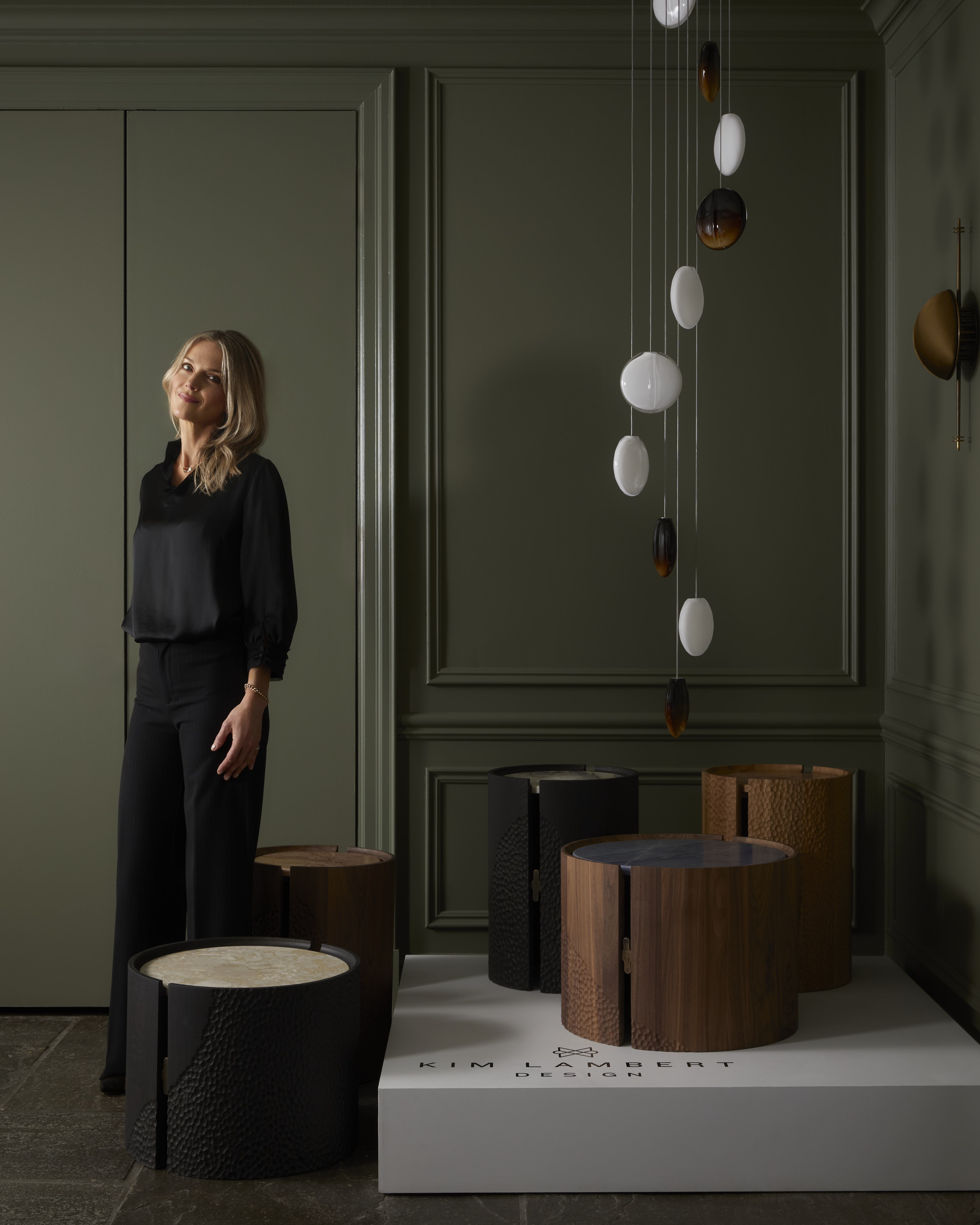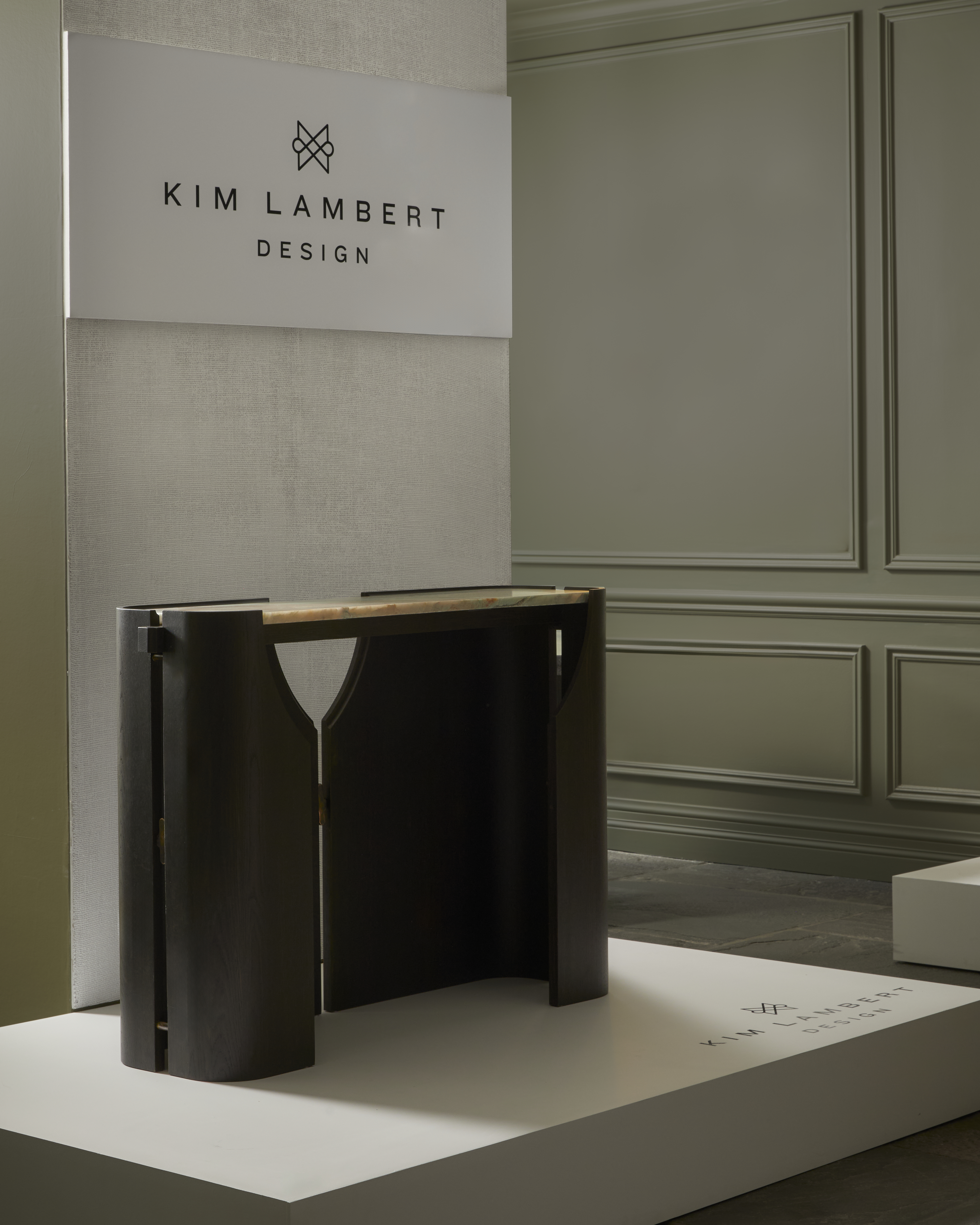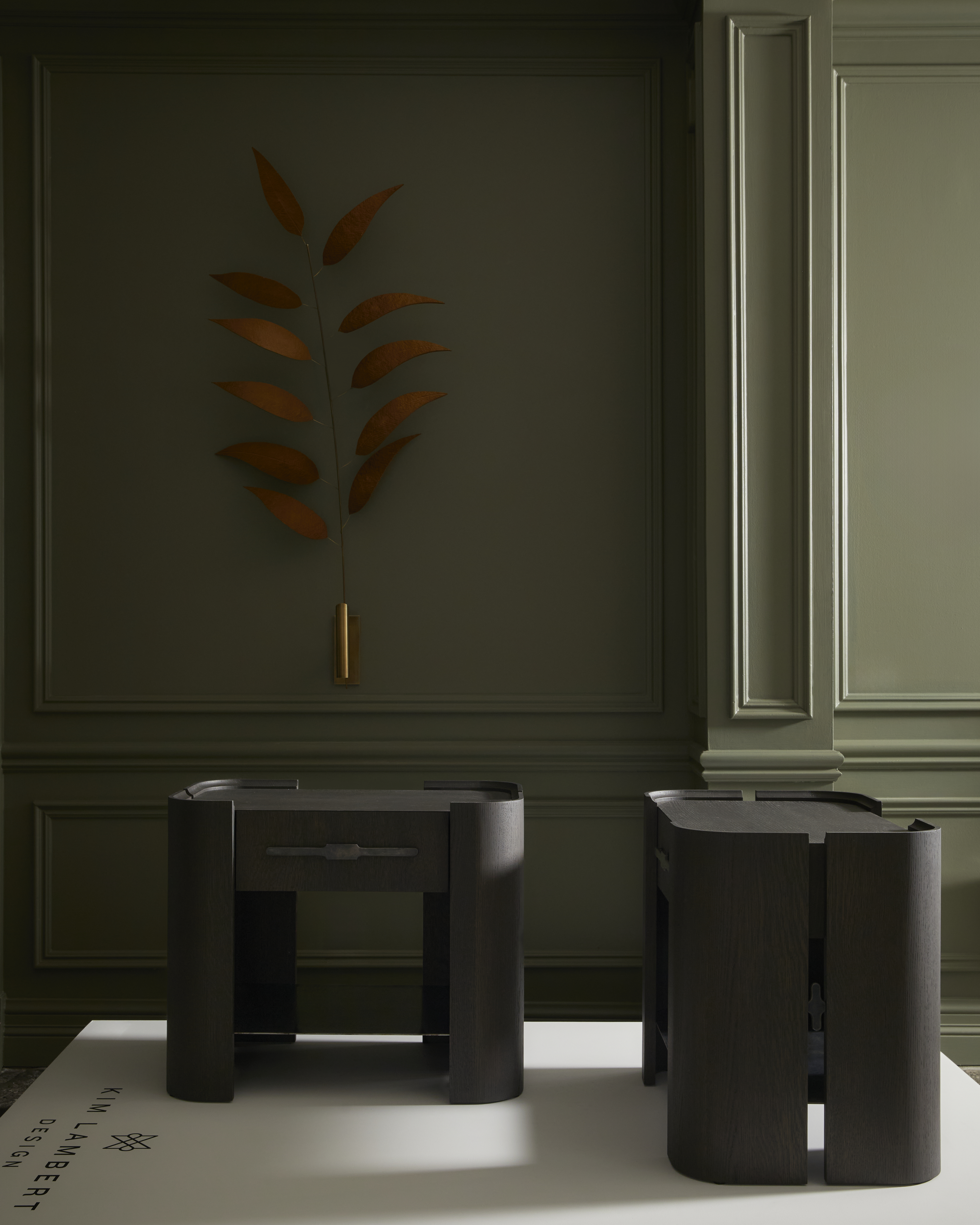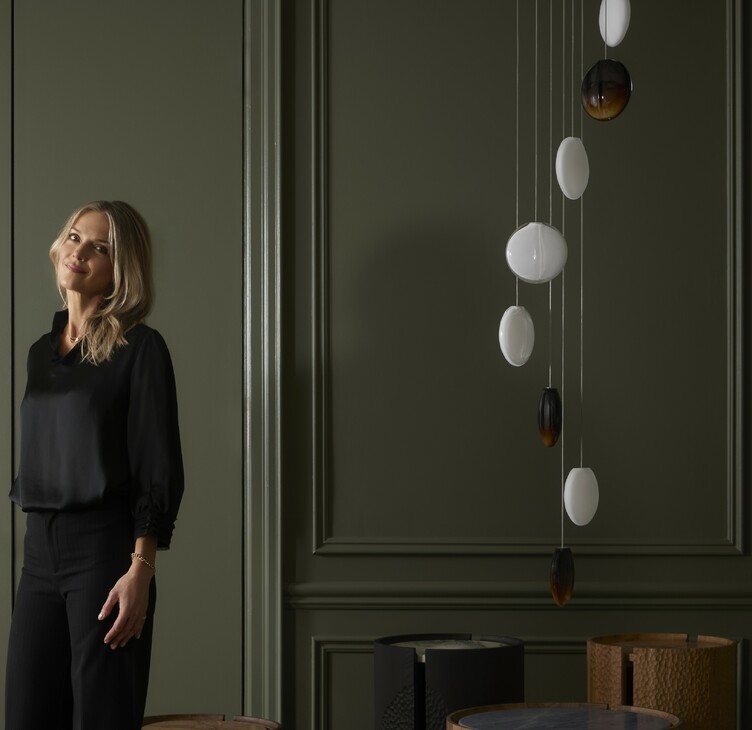
Designer Kim Lambert with the Horizon series from her WILLOW Collection in Hollace Cluny’s Toronto showroom.
For nearly 20 years, Kim Lambert Design has been tapped by tastemakers craving rooms composed of engaging juxtapositions and standout features—be it a dazzling lighting design, a beautifully designed kitchen, a feature fireplace, or a spacious spot to find refuge and wile the hours away.
Founder, principal and creative director of the full-service design studio, Kim Lambert—who first worked under the renowned Canadian design duo of George Yabu and Glenn Pushelberg —is now an icon in her own right; one known for integrating her reverence for architecture and a desire to unify the unexpected in mesmerizing and meaningful ways. Listed as one of House & Home’s Top 100 Designers last year (the past two years), Lambert’s projects run the gamut from a luxurious urban manse with striking elements meant to evoke the feeling of stepping into a tony private hotel, to a tranquil, light-filled retreat in cottage country.
Describing her studio’s practice as one rooted in customization, the studio’s work defines the lines between classic and contemporary, minimalism and opulence, and light and shadow. And, being so drawn to distilling these dichotomies in livable expressions, Lambert found herself compelled to create a trove of exclusive new furniture designs for the inaugural Collaborations: Hollace Cluny launch.
The WILLOW Collection, which features handcrafted, open-edition tables and stools fabricated by Toronto’s Nick Day Design, brings together masculine and feminine moods in an array of arresting furniture pieces that are curvaceously carved and assembled to represent notions of tension and connection. Lambert describes the designs—a series of pieces crafted from selections of wood, metal and stone—as “forms that are both sculptural and soulful, where structured silhouettes curve into gentle lines and carved textures meet polished edges, evoking a harmonious tension between nature's fluidity and architecture's strength.”

Hug, one of the series in WILLOW, comprises a selection of “sculptural embraces” rendered in sublimely carved wood that’s grounded by a central hand-selected stone surface. “Hug is at once open and enclosed,” says Lambert says of the sophisticated design. “It’s a study in support without enclosure, and softness through structure.”
Horizon, the other series in the Collaborations: Hollace Cluny collection that Lambert has created possesses a talismanic quality thanks to its form, which is carefully embellished with a quiet “terrain” of carved notches. A stone slab rests atop its wooden support like a kind of horizon line. “This line becomes a threshold between earth and sky, weight and lift,” Lambert says.
Each element of significance in a piece from WILLOW was designed with the utmost consideration, she adds. “I use ornamentation sparingly to intrigue, elevate and let pieces sing quietly, without interruption. Less is always more, and a curated composition is everything.”
To celebrate the launch of her Collaborations: Hollace Cluny project, Lambert shares the influences and layered meanings behind the WILLOW Collection.
It’s interesting to me that both you and Clarisa Llaneza have brought up Brutalism as an influence when creating your pieces for the Collaborations: Hollace Cluny collections. What draws you to that style?
I often lean into architectural sensibilities in my work. It’s the rhythm and the language of Brutalism that appeals to me; and there’s a sense of restraint in Brutalism which I admire.
I also like to have an aspect of femininity in my work—I like curves, I like softness. The pieces in this collection present a kind of tension between Brutalism and Art Nouveau; the idea of natural or organic lines and a bold, unapologetic form.
This collection is not nostalgic, but reverent — a dialogue between eras, filtered through a contemporary lens.

And what’s the significance of the Collection’s name, Willow?
It speaks to the fluidity and resilience of a willow tree, whose branches yield but never break, as well as the fact that the form of the willow tree is very much a part of the Art Nouveau style.
The name is also linked to the exploration of the masculine/feminine tension I mentioned earlier. My spaces always reflect that duality so that the energies can play off each other and sing together too.
There seems to be a thread of personal meaning that flows throughout your collection as well. One of your Willow series is called Hug, for example. Tell me more about that significance in your pieces.
The idea of designing a furniture collection had been living quietly in the back of my mind for several years, shaped by ideas of connection and centering that kept resurfacing. When Susan from Hollace Cluny invited me to be part of their inaugural Collaborations project, it felt like the right moment to give those thoughts form. Working together on my first collection, we arrived at a series of smaller-scale pieces that hold a sense of intimacy—objects that don’t just fill a space, but gently ground it. They’re made to feel personal, like quiet companions—pieces you live with, not just around.
Let’s talk more about working with Nick Day Design.
I had first worked with Nick about three years ago, and when I heard he’d be involved in this collaboration, it just made sense. He’s good-natured, deeply knowledgeable, and really understands the language of furniture—how details carry meaning. What I appreciate most is the dialogue we share: when I bring an idea forward, he engages with it fully. Sometimes we agree, sometimes we don’t—but there’s always a willingness to explore.
One of those ideas was the metal connector you’ll see in several of the pieces. Through the design process, we decided to take the language further —refining it, and adding a small emblem. It’s a puzzle piece. A quiet symbol, but a meaningful one: puzzle pieces connect, and that’s what this whole process has been about. Not just how materials come together, but how we relate to the things we live with, and to one another.
What are you coming away from this first furniture collection design experience feeling and hoping?
These pieces were also born out of a very personal wish—wanting to make something that fills a gap. The kind of piece someone’s been quietly hoping to find. I approached the collection with the desire of offering something thoughtful and needed—something that speaks in a quiet, honest language. To have that language received and understood is genuinely moving. It’s a real honour. And this is just the beginning—I already have pages of ideas I can’t wait to bring forward as the collection continues to grow.
Photography by Lauren Miller.

